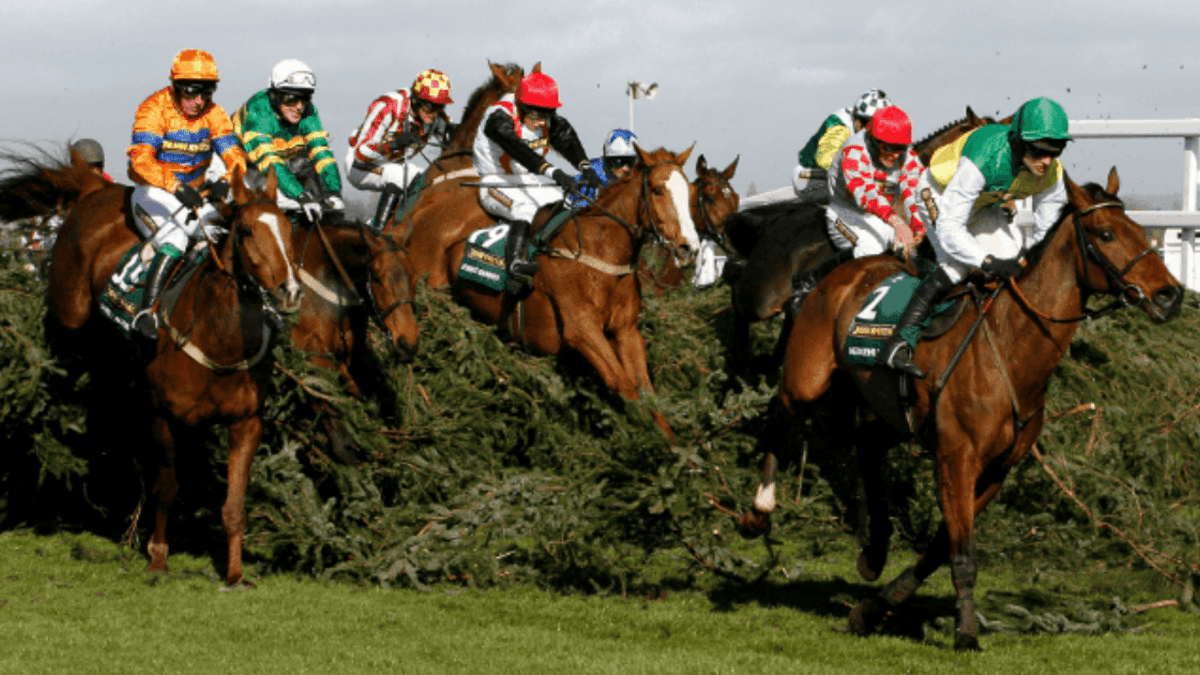How Has The Grand National Changed?

What makes the Grand National unlike any other chase in the world are the spruce-topped fences, towering at no smaller than 4ft 6" (1.37m) - if you discount the 2ft 7" Water Jump.
There's no data on how much smaller they are all now compared to decades ago, but many have been officially tweaked, none more so than Becher's Brook, the most notorious fence on Aintree's infamous course.
When it gained its name, Becher's Brook stood 4ft 10" (1.47m) high, with a drop to the landing site of nearly 8ft and a brook directly underneath.
That was filled in in 1990, and the tricky landing side was modified in 2011.
Now, the landing side is five to 10 inches lower than take-off.
There's also no longer a ditch in front of The Canal Turn, but The Chair still stands as the tallest on the course at 5ft 2" (1.57m), with the landing side the opposite of Becher's at six inches higher than take-off.
Aside from the named fences, the plain fence jumped fourth and 20th was cut two inches to 4ft 10" in 2012 and several landing areas have been levelled off.
The heights of toe-boards at the base of all fences have been increased to match ordinary fences, while the solid cores on most obstacles have been replaced with more flexible plastic or birch.
Distance
Since its inception in 1839, the Grand National was always the guts of four and a half miles, but in 2013, the distance was changed to four miles, two furlongs and 74 yards, as the start line was moved closer to the first fence.
The idea was to move the start further away from the hubbub of the grandstands and crowds.
This would help horses settle before the start and give jockeys and the starter a smoother ride.
Horse Welfare
In 2012, along with the above start move, Aintree built a new post-race washdown and cooling-off area for horses.
The pre-parade down the track has become more flexible, and the minimum age has changed to seven.
These are the latest major upgrades to numerous horse welfare measures already in play, like the raceday veterinary inspection introduced in 2002, and forbidding horses from running in another race that week.
This did happen before 1999, with some testing their mettle over the National fences days before the race itself.
It's an ongoing project and includes tinkering with qualification requirements.
Handicap
Topweights used to be asked to carry crazy weights in the Grand National, regularly 12st or more, sometimes up to 35lbs between them and the bottom weight.
That began to change in 1960 when the topweight was capped at 12st, but horses ran from up to 30lbs out of the handicap when Bobbyjo won in 1999.
The topweight has now changed to 11st 10lb, with the lowest possible weight being 10st.
To attract better horses, the weights are compressed from the top, and, uniquely for a British jumps race, they are framed by senior handicapper Martin Greenwood rather than calculated based on present ratings.
The increasing quality of the race since this change (and the growth of prize money) means that horses rated less than 140 struggle to get into the final field of 34, and a rating more like 145 is the lowest mark guaranteed to run.
Prize-money
Abd El Kader, winner of the 1850 Grand National, netted £1,000 for his owners, a paltry packet compared to the £561,300 Corach Rambler collected last year.
Back then, only the first three to five finishers received prizes, with no field-size limit allowing plenty more than 34 runners to line up.
Recognising how hard it is to finish the race, the prize money band extended to sixth place in 1997.
That spread to eighth place in 2008 and to 10th place in 2012.
Prize money values changed again in 2018 when the winner's pot was reduced to further reward those who finished second to 10th.
The total prize fund for the Grand National is now £1 million, up from £105,000 in 1988, £300,000 in 1998 and £700,000 in 2008.
Since 2010, the winner has taken home £500,000 or more, though the race is not necessarily as valuable today as it once was.
The Bank of England inflation calculator suggests that the 1929 renewal, won by the Tom Leader-trained Gregalach, was worth a massive £946,337.
Reserves and Field Sizes
Incredibly, 66 horses started the 1929 Grand National, with only nine finishing, and the field size was not limited to today's 34 until 1984, though rarely did the field exceed this beyond that chaotic cavalry charge.
In 1999, another change was made, introducing 48-hour declarations and a reserves system that is still in use today to try to ensure the full 34 line-up each year, with no horse missing out unnecessarily.
Female Jockeys
Jump racing was slow to recognise women as jockeys; for many years, the gender was banned from the profession.
Charlotte Brew was the pioneer who first represented women in the Grand National, partnering 100/1 chance Barony Fort until he refused at the fourth-last fence in the 1977 renewal.
Between then and Rosemary Henderson’s fifth aboard 100/1 chance Fiddlers Pike in 1994, 15 other women took part, but not a single woman got a ride again until 2005. That’s when everything began to change for women in racing in general.
Up until then, only two women had completed the course. Since then, 12 of 15 have finished, including Katie Walsh's third on Seabass in 2012 - which was the highest-ever placing by a female jockey at that time.
Rachel Blackmore was the top jockey at the 2021 Cheltenham Festival, and it was a year to remember for the County Tipperary women as she also became the first female jockey to win the Grand National on Minella Times, which is a huge achievement for any jockey.











